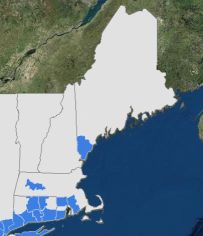EPA Tightens Ozone Standard.Again
On October 1, 2015, EPA announced that the new National Ambient Air Quality Standards (NAAQS) for ozone would be 70 ppb, a 6.7% reduction of the current 75 ppb standard.
On November 25, 2014, EPA had proposed to strengthen the existing ozone standard to 65 ppb – 70 ppb and requested public comment on what value would meet the Clean Air Act requirement that NAAQS be established at a level protective of public health with an ample margin of safety. EPA’s October 1 announcement setting the standard at the higher end of the range is almost certain to be challenged.
A history of the ozone NAAQS is as follows:
|
Date
|
Level (ppb)
|
Averaging Time (hour)
|
Form
|
|
1971
|
80
|
1
|
Can’t be exceeded > 1 hour/year
|
|
1979
|
120
|
1
|
Not more than 1 day/year with hourly concentrations > 120 ppb
|
|
1997
|
80
|
8
|
Annual fourth-highest daily 8 hour max averaged over 3 years
|
|
2008
|
75
|
8
|
Annual fourth-highest daily 8 hour max averaged over 3 years
|
|
2015
|
70
|
8
|
Annual fourth-highest daily 8 hour max averaged over 3 years
|
EPA indicates that the following blue areas in New England do not meet the new ozone standard based on 2012-2014 data.

The implications for areas in nonattainment with the new ozone standard are not yet well defined. States will need to develop and submit attainment plans to EPA within 3 years of promulgation of the new standard. Based on EPA’s positions with respect to the 2008 standard, it is possible, if not likely, that states will need to update their Reasonably Available Control Technology (RACT) requirements for sources of NOx and/or VOCs in the nonattainment areas and possibly throughout the entire Ozone Transport Region, including attainment areas.
If you have any questions regarding the new standard and/or the potential impacts on your facility, please contact Dixon Pike (207.791.1374) or Brian Rayback (207.791.1188).
